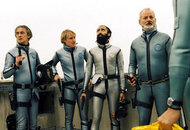The OP (Original Post) touched on the importance of making emergency calls. I am no guru on this but thought some additional information was called for.
Low-Skill Options:
Cell Phone
Consider your cell phone. This may seem obvious, but sometimes people don’t think clearly in the midst of a crisis in unfamiliar locations. The great advantage is you already know how to use it. You will probably already know if you have cell coverage when traveling in another part of the world, but you may have no idea who to call in an emergency. It is a good idea to find out before you even step off the plane since you could need help onshore as well. You can waste a lot of time having to call home to get them to hail assistance from half a world away.
Iridium Satellite Phone
Most of us only know satellite phones from television and movies, but could figure out how to use one. Compared to cell phones they are very expensive to purchase and are probably the most expensive to use… but they work anywhere. A lot of liveaboards have one and it is a good idea to know where it is stored if they are willing to tell you.
EPIRBs and PLBs or Emergency Position Indicating Radio Beacon and Personal Locator Beacons:
This was briefly mentioned in the OP. The simple description is a self-contained electronic device that sends a radio signal to a satellite with the beacon ID and current GPS coordinates. The fact that the satellite receives this signal is interpreted as a Mayday, SOS, or eminent danger call for help. At that point humans get involved and call out every resource close to your location for help, no matter where in the world it is.
In the event you are unable to transmit a radio message you can resort to activating the boat’s EPIRB or even your own PLB (Personal Locator Beacon). There are no range limitations to these devices; however there also is no voice communications. There are emergencies where you can be “talked through” an eminent crisis or buy some time.
High-Skill Options:
Radios
Unfortunately radios are a much more complicated proposition. Aside from knowing how to operate them, using the right channel, and finding someone that speaks your language, there is also the problem of knowing which radio to use. Very often emergencies are very time-critical. It is a good idea if you know what to say:
Radio Information For Boaters
DSC Distress
A lot of radios today are equipped with DSC (Digital Selective-Calling) automatic distress alerts. Like an EPIRB or PLB, they transmit the device ID and GPS coordinates on a special frequency monitored by local rescue services and often (sometimes?) other vessels. As a minimum, ask if DSC is configured and how to operate the emergency button.
VHF or Very High Frequency is the most common radio in use. They are line-of sight so their range is relatively limited due to the curvature of the earth. There are lots of types including handheld. Generally the higher the wattage and higher the antenna is off the water the longer the range.
HF/SSB or High Frequency / Single Side Band have much longer ranges but can be very susceptible to atmospheric interference.
There are a lot of different rules around the world so hopefully other Scubaboard members can expand on this introduction.
Low-Skill Options:
Cell Phone
Consider your cell phone. This may seem obvious, but sometimes people don’t think clearly in the midst of a crisis in unfamiliar locations. The great advantage is you already know how to use it. You will probably already know if you have cell coverage when traveling in another part of the world, but you may have no idea who to call in an emergency. It is a good idea to find out before you even step off the plane since you could need help onshore as well. You can waste a lot of time having to call home to get them to hail assistance from half a world away.
Iridium Satellite Phone
Most of us only know satellite phones from television and movies, but could figure out how to use one. Compared to cell phones they are very expensive to purchase and are probably the most expensive to use… but they work anywhere. A lot of liveaboards have one and it is a good idea to know where it is stored if they are willing to tell you.
EPIRBs and PLBs or Emergency Position Indicating Radio Beacon and Personal Locator Beacons:
This was briefly mentioned in the OP. The simple description is a self-contained electronic device that sends a radio signal to a satellite with the beacon ID and current GPS coordinates. The fact that the satellite receives this signal is interpreted as a Mayday, SOS, or eminent danger call for help. At that point humans get involved and call out every resource close to your location for help, no matter where in the world it is.
In the event you are unable to transmit a radio message you can resort to activating the boat’s EPIRB or even your own PLB (Personal Locator Beacon). There are no range limitations to these devices; however there also is no voice communications. There are emergencies where you can be “talked through” an eminent crisis or buy some time.
High-Skill Options:
Radios
Unfortunately radios are a much more complicated proposition. Aside from knowing how to operate them, using the right channel, and finding someone that speaks your language, there is also the problem of knowing which radio to use. Very often emergencies are very time-critical. It is a good idea if you know what to say:
Radio Information For Boaters
DSC Distress
A lot of radios today are equipped with DSC (Digital Selective-Calling) automatic distress alerts. Like an EPIRB or PLB, they transmit the device ID and GPS coordinates on a special frequency monitored by local rescue services and often (sometimes?) other vessels. As a minimum, ask if DSC is configured and how to operate the emergency button.
VHF or Very High Frequency is the most common radio in use. They are line-of sight so their range is relatively limited due to the curvature of the earth. There are lots of types including handheld. Generally the higher the wattage and higher the antenna is off the water the longer the range.
HF/SSB or High Frequency / Single Side Band have much longer ranges but can be very susceptible to atmospheric interference.
There are a lot of different rules around the world so hopefully other Scubaboard members can expand on this introduction.





 These others come to mind:
These others come to mind: